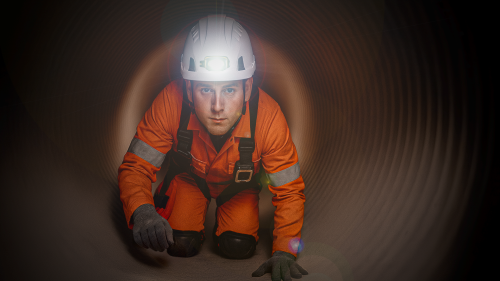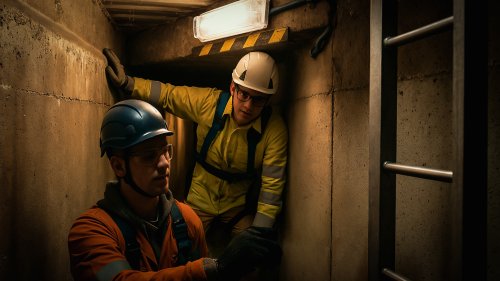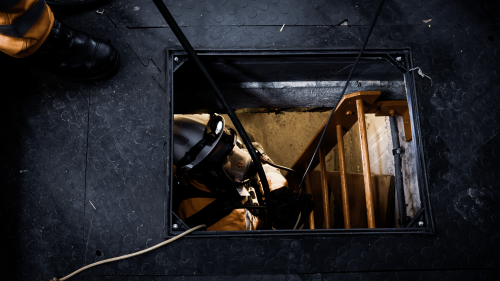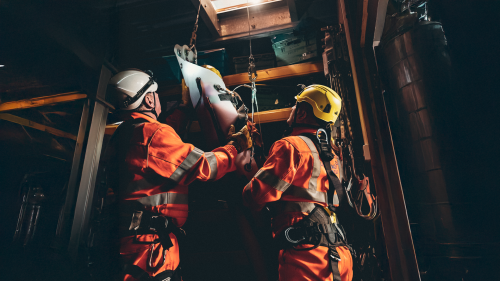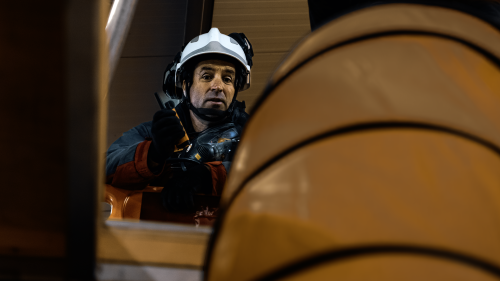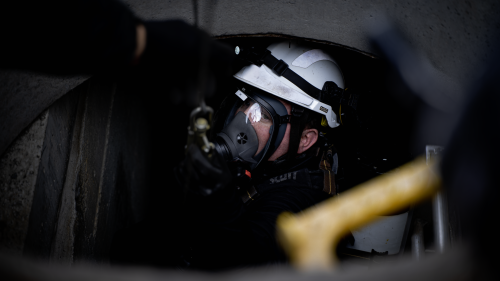

Confined Space Training
Learn how to assess, enter and work safely within Confined Spaces
Our comprehensive range of Confined Space courses cover each level of risk – Low-Risk, Medium-Risk and High-Risk – providing training pathways for entrants, supervisors, managers, and entry controllers. Through practical, often scenario-based instruction, participants gain the skills to assess hazards, control entry, and respond effectively to emergencies, ensuring full compliance with industry standards and regulations.
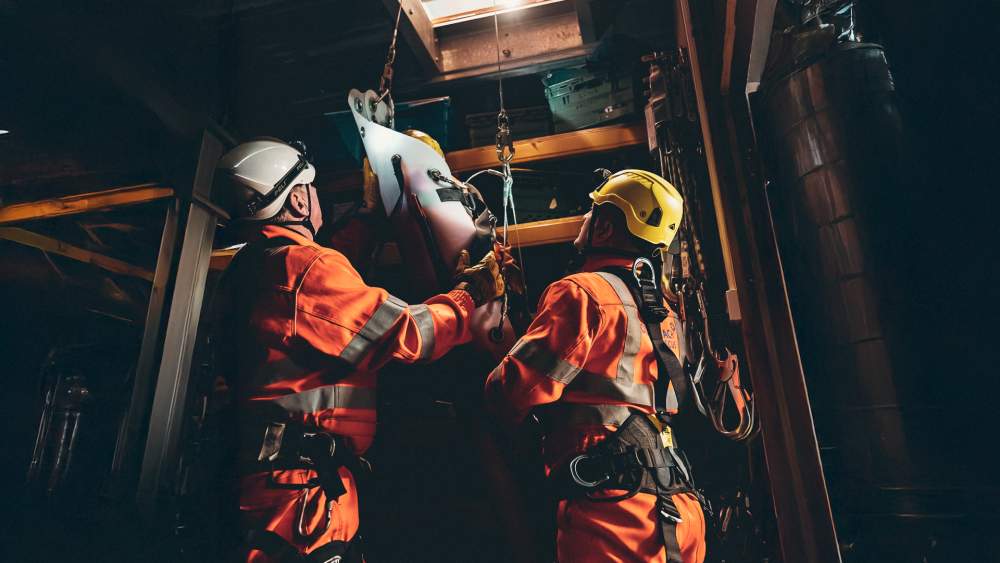
Accredited Confined Space Entry and Rescue Training
In the UK, confined space work is regulated by the Confined Spaces Regulations 1997 and should follow the Approved Code of Practice (ACOP) issued by the Health and Safety Executive (HSE). Employers must avoid entry where possible, use safe systems of work when entry is necessary, and maintain effective emergency arrangements.
Outreach Rescue delivers Confined Space entry and rescue training that helps organisations meet these legal duties. Courses are delivered at our purpose-built training facilities, led by instructors with real-world rescue experience, giving delegates the competence and confidence to work safely.
Realistic Scenarios
Vertical and horizontal entries, poor visibility, restricted movement, challenging comms, and rescue drills.
Experienced Instructors
Delivered by operational rescue professionals — practical, safe, and aligned with industry standards.
Aligned to UK Guidance
Confined Spaces Regulations 1997, ACOP L101, National Occupational Standards.
Confined Space Entry Courses
Learn to enter, work, and operate safely in confined spaces with accredited training designed for compliance and real-world confidence — no prerequisites required.
Training For Confined Space Entry Control
Accredited qualifications for controlling entries, issuing permits, atmospheric monitoring, logging events and measurements, and taking charge of communications — no prerequisites required.
Confined Space Entry Control training equips delegates with the knowledge and practical skills to manage Confined Space operations safely and in compliance with legal requirements. Learners develop confidence in controlling entry procedures, monitoring atmospheric conditions, and implementing effective emergency plans. Through hands-on use of breathing apparatus, ventilation systems, and work-at-height PPE, delegates gain the competence to oversee confined space activities, protect their teams, and maintain accurate safety records on site.
Confined Space Rescue & Recovery
Build on your High-Risk Entry qualification with Rescue & Recovery training. Then progress to leading others as a certified Director.
Confined Space Supervision & Management
Lead teams. Manage risk. Set Standards.
Training Pathways
Outreach Rescue offers Confined Space Training Pathways that support learners at every stage — from new entrants to experienced operatives and rescue personnel. Each step builds on the last, helping you progress safely and confidently.
Some courses offer direct entry. Others require specific prerequisites for advanced practical, supervisory, or instructional roles.
Our Confined Space courses are divided into two categories — Workplace Safety and Specialist Rescue. Workplace Safety courses cover safe working practices, entry procedures, and supervision for those who enter or manage confined spaces as part of their job. Specialist Rescue courses focus on advanced techniques for rescue teams and emergency responders who may be required to recover casualties from confined spaces.

Training Requirements & Qualifications
Adequate training is a legal requirement for anyone involved in confined space work, including entrants, supervisors, and rescue personnel. Regular training is also essential to maintain ongoing competence and compliance.
Outreach Rescue delivers City & Guilds-accredited confined space entry and rescue training across all levels, from low-risk entry to supervisory and rescue team qualifications. These awards ensure delegates gain the competence to work safely and manage confined space operations in accordance with the Confined Spaces Regulations 1997. 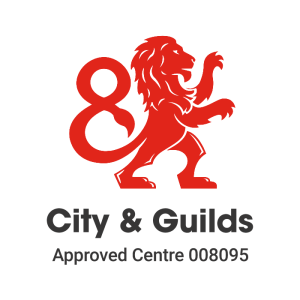
Training covers all key elements of confined space safety — from risk assessment and safe systems of work to the use of gas monitoring, breathing apparatus, retrieval systems, and emergency rescue procedures. Delivered by instructors with operational rescue experience, Outreach Rescue provides the trusted, accredited route to competence in confined space entry and rescue.

Five Specified Risks That Define a Confined Space
Under the Confined Spaces Regulations 1997, a space is classed as a Confined Space if, by virtue of its enclosed nature, there is a reasonably foreseeable specified risk. These specified risks are:
- Serious injury from fire or explosion.
- Loss of consciousness caused by an increase in body temperature.
- Asphyxiation or loss of consciousness resulting from gases, fumes, vapours, or oxygen deficiency.
- Drowning due to an increase in the level of liquid.
- Entrapment or asphyxiation caused by free-flowing solids such as grain or sand.
If any of these risks are reasonably foreseeable in the area you work, confined space training is required to ensure legal compliance and personal safety.
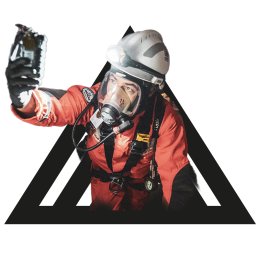
Take your next step in Confined Space training
Call +44 (0)1248 601 546, email enquiries@outreachrescue.com or complete the form below to request more information.
FAQs
Frequently Asked Questions
What is classed as a Confined Space?
According to the HSE Confined Spaces Regulations 1997, a Confined Space is legally defined as:
“Any place, including any chamber, tank, vat, silo, pit, trench, pipe, sewer, flue, well or other similar space in which, by virtue of its enclosed nature, there arises a reasonably foreseeable specified risk.”
Do I need Confined Space training?
If your work involves entering, supervising, or planning tasks within confined spaces, training is a legal requirement under the UK's Health and Safety at Work etc. Act 1974 and the Confined Spaces Regulations 1997. It ensures you understand the risks, safety systems, and emergency procedures involved.
What levels of Confined Space training does Outreach Rescue provide?
Our comprehensive programme covers all levels; from basic awareness and entry-level to advanced rescue and management qualifications. Training can also be tailored to organisational requirements.
Where does training take place?
Courses are delivered at our purpose-built training facilities in North Wales, designed to simulate real confined space environments. We may be able to provide on-site training at your workplace, subject to a suitability assessment.
What certification will I receive?
Delegates who successfully complete the course have the option to receive either accreditation from Outreach Rescue or to choose City & Guilds certification for an additional C&G Certification fee. The C&G qualification is recognised across the UK and internationally as formal proof of competence in confined space work.
What should I bring to training?
Delegates should wear suitable work clothing and safety boots. All specialist equipment, including harnesses, breathing apparatus, and gas detectors, are provided by Outreach Rescue.
|
|

